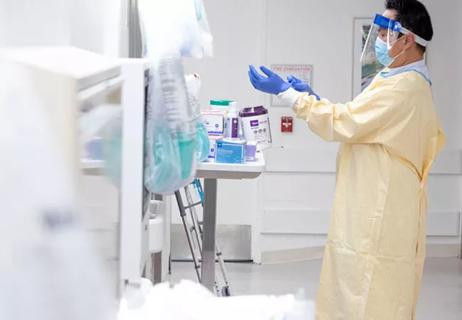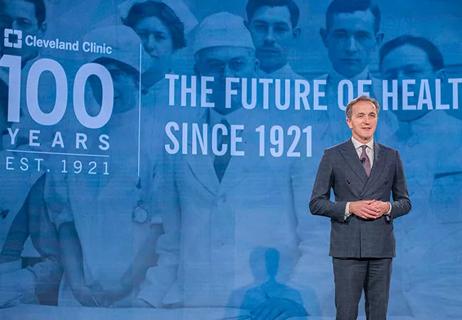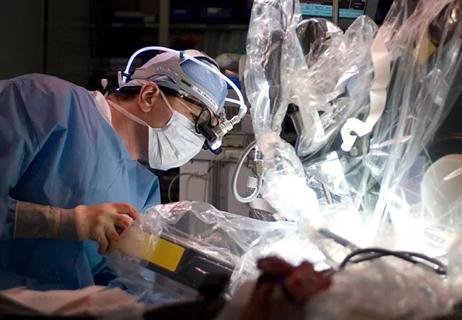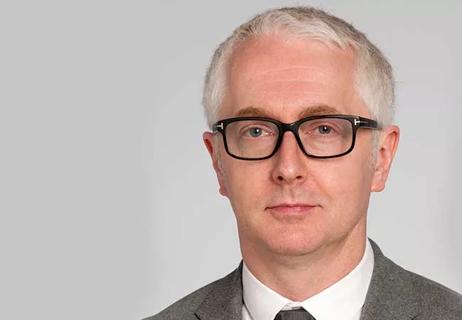Proven success through 4 integral systems

Cleveland Clinic is a non-profit academic medical center. Advertising on our site helps support our mission. We do not endorse non-Cleveland Clinic products or services. Policy
Healthcare is in the midst of dramatic change. New technologies, new medications and new approaches have changed the way we deliver care.
In the modern healthcare world, one of the most widely-heard phrases is “continuous improvement.” We aim to continuously improve our care by ensuring every caregiver is “capable, empowered and expected to make improvements every day.” The Cleveland Clinic Improvement Model (CCIM) makes this not just as an ideal, but as a goal that is both attainable and sustainable. And it works everywhere.
Created, tested and proven by more than 10,000 Cleveland Clinic caregivers, the CCIM details the key systems and behaviors we have found essential to build, advance and sustain a culture of improvement. It gives senior leaders, managers and frontline caregivers not only the tools and practices to deliver safer, more compassionate, more affordable care, but the culture and leadership required for improvement to happen, now and in the future.
Many have some familiarity with the basic concepts, tools and approaches of process improvement. Some have applied these methods or, at least, seen examples of their application. But unfortunately, many have also seen and experienced real challenges in the pursuit of a culture of continuous improvement.
Of course, change is difficult, and any program attempting to develop durable improvements or a sustained culture of continuous improvement faces challenges. One of the more common hurdles in any such program is the tendency to go through start/stop cycles, eliminating the “continuous” aspect of continuous improvement. Others may include a demoralizing lack of quick results, frustration with the process, and optimizing for one goal (such as the patients or organization) at the expense of another (the caregivers). This leads to an overall staff feeling of exclusion rather than inclusion, breeding frustration and impeding development of an improvement culture.
Cleveland Clinic has been changing the model of CI in healthcare. In order to be effective in healthcare, the model must have three universal qualities. First, it must be accessible to all participants. That means it’s clear, concise and understandable, with no easily-misinterpreted jargon.
Second, we must prioritize our needs across the entire enterprise. We start by asking the overarching question “What matters most?” What is critically important? Once we have identified what matters most, we can measure and share how we are doing, and we can improve it. Organizational alignment can help frame the need for improvement and the specific goals for that improvement. It can help us develop actions, timelines, responsibilities, and measures for improvement.
And finally, it must work everywhere. In order for departments in different locales to work together, it must be universal. From inpatient units to finance to urology, Cleveland to Toronto, the CCIM has been applied across both clinical and nonclinical situations, by approximately 10,000 nurses, physicians and administrators, in numerous locations. It works everywhere.
Our improvement model consists of four parts, but these parts are not separate. It’s a system that fits together and is mutually supportive.
We begin by asking “What matters most?” This simple question is an incredibly powerful way to quickly align and focus our efforts. And it’s neither top-down nor bottom-up. It’s both. It’s about creating alignment ― between goals and actions, from top to bottom and across the entire enterprise. Frontline caregivers can only connect their individual work to the broader picture when they are encouraged and empowered to see the impact of their work, and to improve that work. At Cleveland Clinic, that helps our mission, “Patients First,” be a daily reality and not just a slogan that is casually tossed off.
While it may be true that “what gets measured, gets managed,” visual management goes beyond whiteboards, charts and metrics. Visual management enables everyone to see how we are doing today. We can celebrate accomplishments and address problems as they occur. It’s as close as we can get to a real-time report, very different from a manager getting information weeks later. By then it’s too late for the team to impact that work, and no opportunity for learning because we’ve since forgotten what made us do well ― or not well.
Strong visual management allows us to:
Our approach is not one of simply solving problems today, but of building capabilities that allow our people to be better at solving problems in the future. Rather than providing “answers,” we empower and encourage caregivers at all levels to develop solutions together.
That means several things. Managers are free to create time for people to work on improvement. Not having time for improvement is a problem to be solved, not a reason to continue with the status quo. It goes back to “what matters most” ― keeping patients first and continuously improving the way we serve them.
It also means that people need to work in an environment in which they can talk freely about problems, mistakes, errors, and near misses. And when our solutions don’t work out as expected, they must be looked at not as “failures” but as learning opportunities that will help us develop even better solutions next.
Standardization helps to ensure that we always do our work in the best known way. This applies to all of our work – including the way we deliver care, the way we manage and lead, and the way we improve. Standardization means that we work to ensure we maintain standards, and we improve those standards when we a better way is discovered.
These four integral systems work in harmony, enabling us to create and further a culture of continuous improvement. Through the CCIM we are able to make things better for our patients, for our caregivers, and for our organization.
Follow Dr. Yerian on Twitter at @LisaYerianMD
Suggested reading:
Continuous Improvement Initiative Streamlines Processes, Empowers Nurses
Accelerating the Pace of Clinical Transformation Through a ‘Continuous Improvement’ Initiative
Nurses Offer Solutions for Improvement

Cleveland Clinic partners with Palantir to create logistical command center

How our multifaceted Hero Experience Program is a win for all involved

Training, resources help with meaningful palliative care conversations

Cleveland Clinic celebrates its centennial year in 2021

How employers can support their employees’ well-being

Continuous Improvement: As it relates to the clinical setting…and cooking

How a standardized checklist is guiding us to fewer safety events

New position aligns architectural design with patient experience